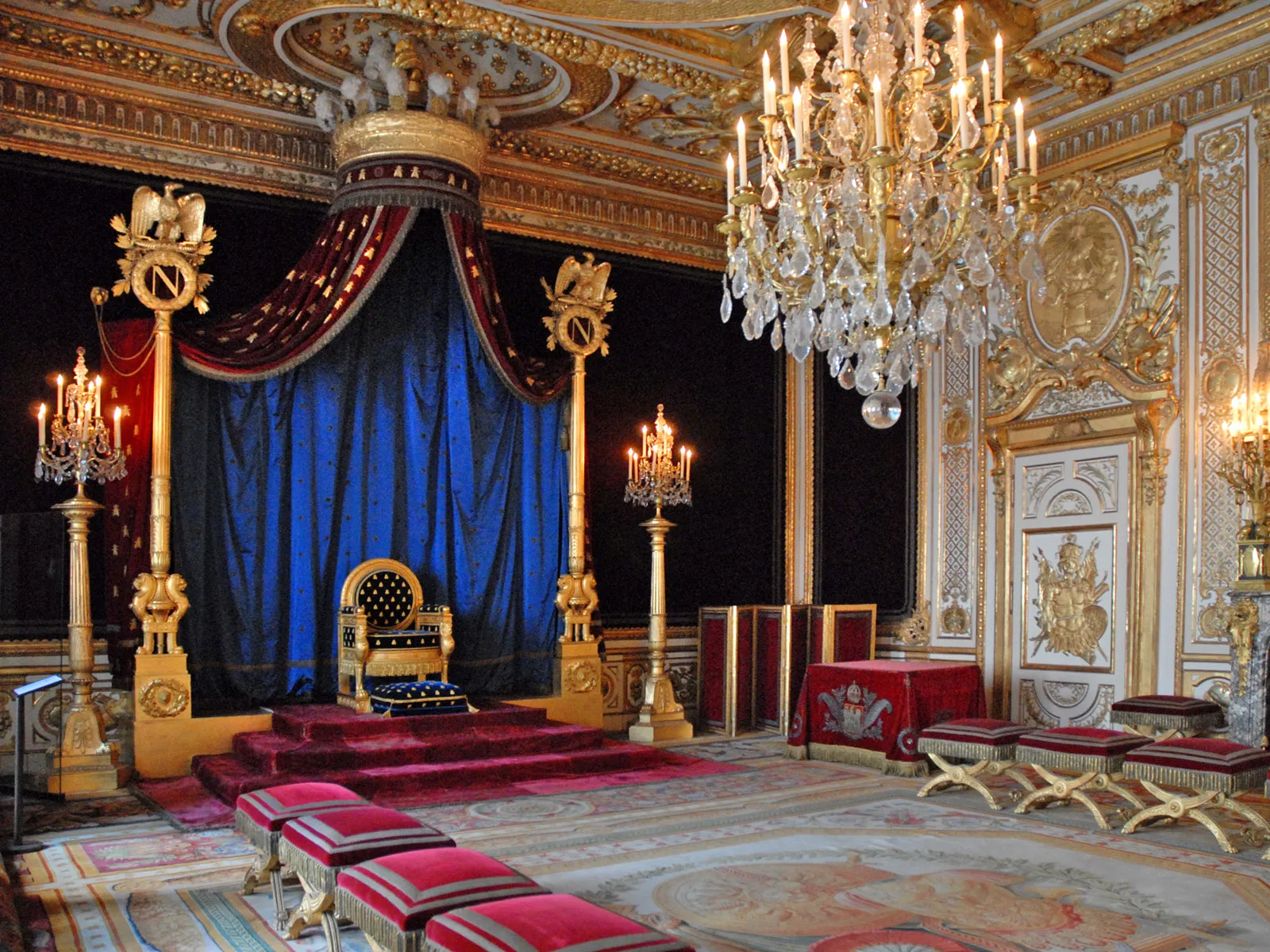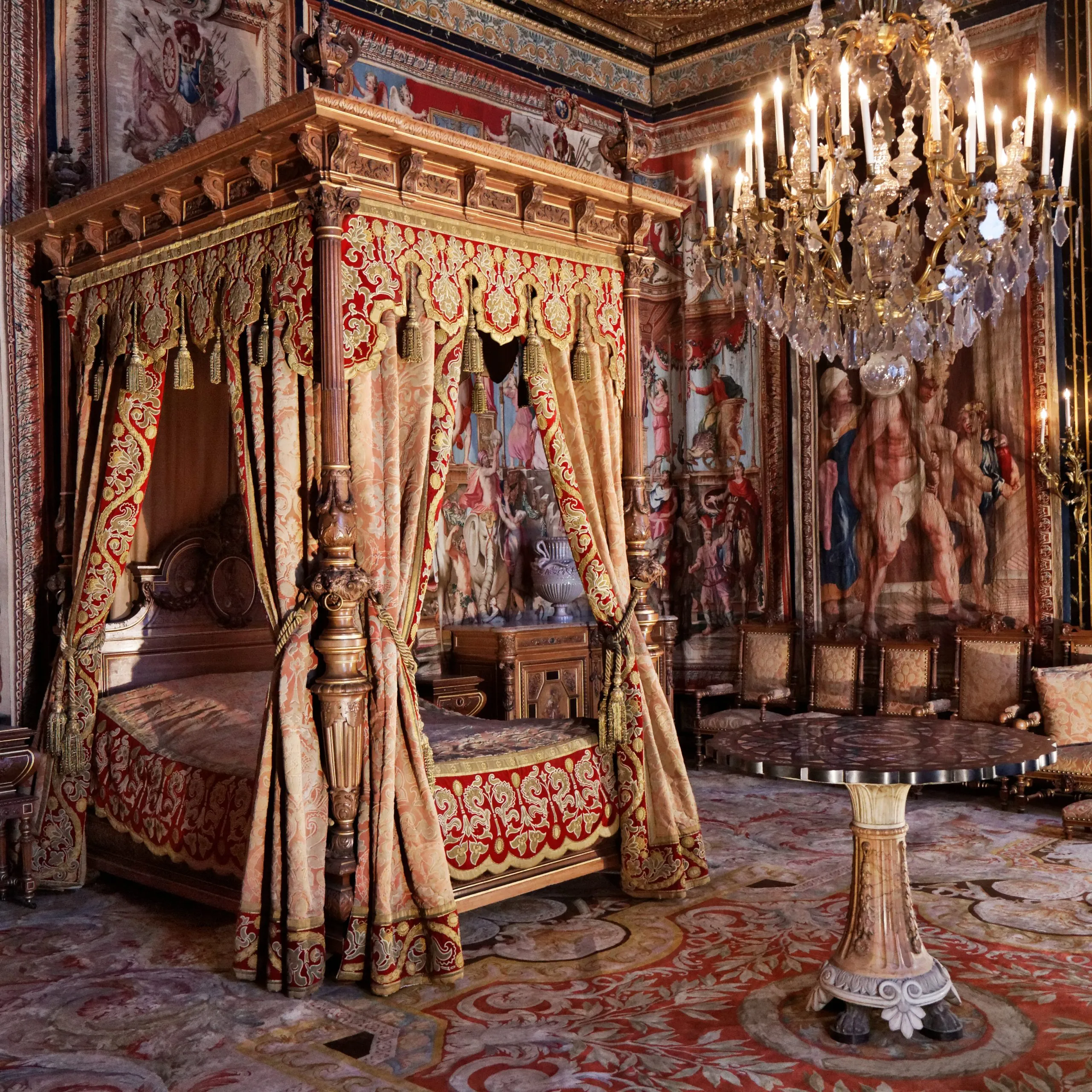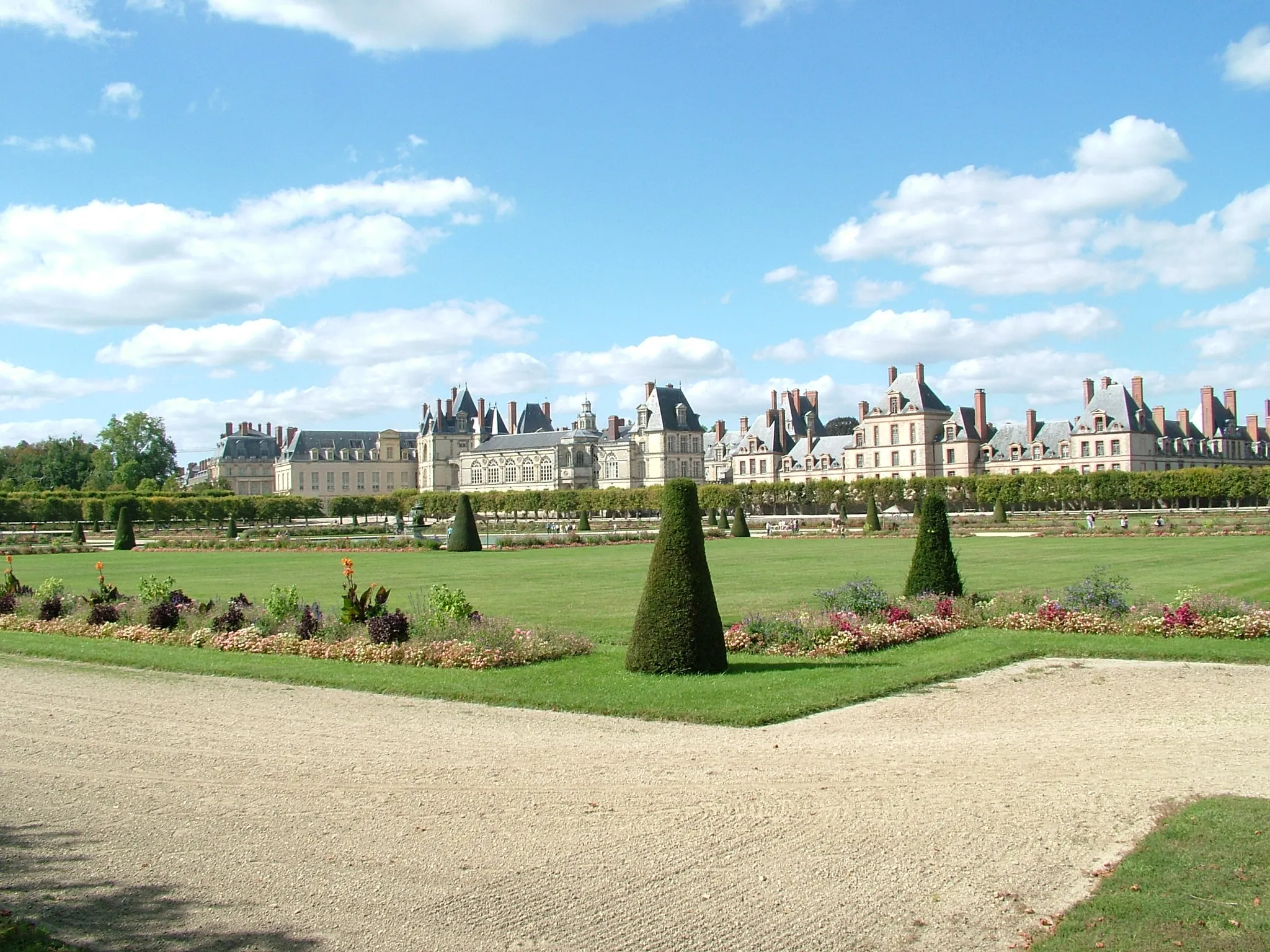Fontainebleau, a precious gem located not far from Paris, is more than just a palace; it’s a living history book where every wall, every garden tells a story. Recognized by UNESCO as a World Heritage site since 1981, this palace has witnessed the rise and fall of French dynasties over centuries, from medieval hunting parties to Napoleon’s historic decisions. Join World Travel Guide as we explore the architectural beauty, cultural richness, and historical significance of Fontainebleau Palace, an unmissable destination for history and art lovers.
History of Fontainebleau Palace: Footprints of Time
Fontainebleau Palace is not merely an architectural structure; it’s a living witness to French history, from the Middle Ages to the Napoleonic era and beyond. Let’s explore the key developmental stages that shaped this magnificent palace.
From Hunting Lodge to Royal Palace
The origins of Fontainebleau date back to the 12th century when it was built as a medieval hunting lodge. This location was chosen for its proximity to the vast Fontainebleau forest, an ideal spot for noble hunting activities. Over time, this modest hunting lodge gradually evolved into an important royal residence.
Glorious Renaissance under Francis I
King Francis I (1515-1547) played a crucial role in transforming Fontainebleau into a magnificent Renaissance-style palace. Inspired by Italian architecture, he invited leading artists and architects from Italy, including Leonardo da Vinci, to rebuild the palace. Highlights of this period include the construction of the iconic Horseshoe Staircase and the Galerie François I, a splendid space with exquisite frescoes and stucco work.
Subsequent Centuries: Expansion and Refinement
Successive monarchs, from Henry II and Catherine de’ Medici to Henry IV, continued to expand and embellish the palace. Their contributions included adding new wings, courtyards, and gardens. Notably, Henry IV commissioned the Grand Parterre, one of the largest formal gardens in Europe, showcasing sophistication in landscape design and royal aesthetics.
Influence of Baroque and Classicism
Under Louis XIII and Louis XIV, Fontainebleau continued to be enhanced with Baroque and Classical elements. The Grand Apartments, the Trinity Chapel, and the lavish ballroom (La Salle de Bal) were added, reflecting the changing architectural and artistic styles of the era.
Napoleon and the Historical Imprint
Napoleon Bonaparte left a profound mark on Fontainebleau. He renovated the palace and used it as a residence and a center of power. In 1814, Napoleon signed his first abdication here, marking a pivotal moment in French history and for the palace itself. After returning from exile, he stayed briefly at Fontainebleau during the “Hundred Days.”

Architecture and Interior: A Blend of Styles
Fontainebleau Palace stands as a testament to architectural evolution through the centuries, harmoniously blending styles from the Middle Ages to the Renaissance, Baroque, and Classicism.
Magnificent Courtyards
The palace features several large courtyards, each with its unique beauty and characteristics. The Cour du Cheval Blanc (White Horse Courtyard), also known as the Cour des Adieux (Farewell Courtyard), is one of the most famous, featuring the iconic Horseshoe Staircase where Napoleon bid farewell to his troops before his exile.
Lavish Royal Apartments
The royal apartments are a treasure trove of art and history, reflecting the tastes and styles of different eras. The King’s and Queen’s Apartments, the Pope’s Apartment (where Pope Pius VII was held captive), and the Napoleon I Museum with the Emperor’s throne room are highlights, each adorned with exquisite artworks, fine furniture, and unique architectural details.
Trinity Chapel: A Baroque Masterpiece
The Trinity Chapel is a masterpiece of Baroque architecture, featuring intricately carved woodwork, stunning ceiling paintings, and frescoes. It has witnessed many important events, including royal baptisms and weddings.
Art Galleries
The palace’s galleries are renowned for their artistic significance. The Galerie François I is a prime example, decorated with Renaissance frescoes by Rosso Fiorentino and Primaticcio, depicting mythological and allegorical themes.

Gardens and Park: A Green Oasis
The gardens at Fontainebleau are as impressive as the palace itself. They include the Grand Parterre, designed by André Le Nôtre, a master of landscape design; the English Garden, with its naturalistic landscape; and the Garden of Diana, named after the Roman goddess of the hunt.

Cultural and Historical Significance: More Than a Palace
Fontainebleau Palace is not just an architectural structure; it is a cultural repository, a witness to significant historical events, and a meeting place for artists, writers, and intellectuals. Its rich history is reflected in the diverse architectural styles and exquisite art collections housed within its walls.
Planning Your Visit
Today, Fontainebleau Palace is a major tourist attraction, drawing visitors from around the globe. It offers deep insights into French history and art, with guided tours exploring the grand rooms, galleries, and gardens. Special exhibitions and events are held throughout the year, offering fresh and exciting experiences for visitors.
Fontainebleau Palace is located in the commune of Fontainebleau, about 55 km southeast of Paris. It is easily accessible by train or car. The palace is open daily, with extended hours during peak season. It is advisable to purchase tickets in advance, especially during peak times, to avoid queues.

Conclusion: A Journey Through Time
Exploring Fontainebleau Palace is a journey through time, an opportunity to admire architectural beauty, learn about rich history, and immerse oneself in a unique cultural space. It is an unmissable destination for anyone interested in the cultural heritage of France and Europe. Plan your trip today and discover the secrets of Fontainebleau Palace!